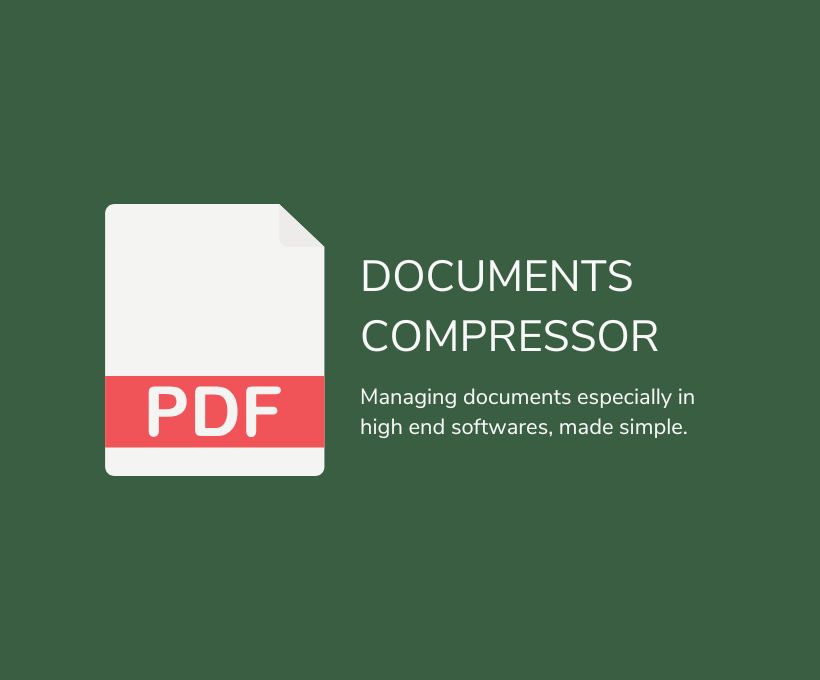Introduction
Imagine a world where government officials—patwaries in countries like Pakistan—no longer struggle with cumbersome PDF documents during land record transactions. Patwar PDF Compressor is the solution designed to tackle this very challenge. This project provides a fast, efficient, and adaptive way to compress PDFs, ensuring that each image is under the required 300 KB limit, so that multiple documents can be attached seamlessly within official land record systems.
Key Highlights:
- Purpose: Optimally compress scanned PDF documents to meet strict size constraints.
- Technologies: Built using Python, FastAPI, PyMuPDF, Pillow, and more.
- Target Audience: Patwaries and other professionals dealing with digital land records.
Project Background & Motivation
The digitization of land records has streamlined many administrative tasks, but it also brought about new challenges. Patwaries, who handle these records, face critical issues when attaching documents to government software. The system enforces a strict file size limit—each image must be below 300 KB, and the total attachments must also stay within a predefined threshold.
In practice, patwaries often:
- Skip attaching essential documents,
- Only partially attach documents, or
- Rely on third-party software that fails to compress the images optimally—sometimes producing images that still exceed 300 KB.
Motivated by these shortcomings, I built Patwar PDF Compressor. This application automates the entire process: it extracts images from a PDF, compresses each image adaptively, and packages them into a ZIP file. This ensures that the final compressed output is both efficient and of high quality—tailored to the exact needs of patwaries working in digital environments.
Technical Deep Dive
Architecture Overview
The project follows a client-server model deployed on the cloud. Users upload their PDFs through an API endpoint hosted on my portfolio website, and the backend processes the file before returning a compressed ZIP of images.
Key Components
- PDF Processor (
pdf_processor.py):- Validation: Checks file existence and ensures the MIME type is
application/pdfusingpython-magic. - Image Extraction: Uses PyMuPDF and Pillow to convert each page of the PDF into a high-resolution image.
- Validation: Checks file existence and ensures the MIME type is
- Image Compressor (
compressor.py):- Adaptive Compression: Iteratively compresses each image to meet the target size without compromising quality. This includes testing at a set quality and dynamically adjusting to achieve optimal compression.
- Batch Processing: Capable of processing multiple images simultaneously and scaling target sizes if the combined image size exceeds predefined thresholds.
- Logger (
logger.py):- Robust Logging: Records detailed information about each step—from file validation to compression—ensuring that any issues can be easily tracked and debugged.
- API Endpoint (
main.py):- Security & Workflow: Implements API key authentication and referer-based access control. It orchestrates file uploads, PDF processing, and the final response generation.
- Testing Script (
test_render_service.py):- End-to-End Verification: Ensures the API’s performance and reliability by sending test PDFs and measuring the overall processing time.
Data Flow
- User Uploads PDF: The FastAPI endpoint receives the PDF file.
- Validation & Extraction: The PDF is validated and each page is converted into an image.
- Adaptive Compression: Each image is compressed to ensure it fits under the required size constraint.
- Final Output: All compressed images are packaged into a ZIP file and sent back to the user.
Challenges & Solutions
1. Handling High-Resolution Documents
- Challenge: Scanned PDFs often contain high-resolution images that easily exceed size limits.
- Solution: To reduce compression time, I moved away from traditional iterative approaches that gradually reduce quality in small steps. Instead, I implemented an optimized adaptive compression algorithm that significantly speeds up the process:
- Initial Test Compression: Perform a quick compression to observe how much size is reduced.
- Compression Level Estimation: Calculate the exact compression percentage required to reach the target size, avoiding unnecessary iterations.
- Direct Compression: Apply the computed compression level in a single step to achieve the required size.
- This method ensures that most images/PDFs are compressed in just three steps, eliminating the need for multiple trial-and-error cycles.
- As a fallback, I implemented traditional iterative compression—used only if the adaptive method doesn’t achieve the target size. However, in production, the adaptive technique has been 100% effective, making the fallback unnecessary so far. This approach not only ensures fast processing but also preserves image clarity while meeting strict file size constraints.
2. Ensuring Fast and Reliable Processing
- Challenge: The need for real-time processing to facilitate quick document attachments.
- Solution: Optimized the code for batch processing and parallel operations, reducing overall processing time even for large files.
3. Securing API Access
- Challenge: Preventing unauthorized usage of the service.
- Solution: Implemented robust API key authentication combined with referer-based checks to ensure only authorized requests are processed.
Results & Impact
Patwar PDF Compressor has proven to be a game-changer in managing digital land records:
- Efficiency: Compresses high-resolution documents in seconds.
- Quality: Maintains optimal image clarity even after significant compression.
- Accessibility: API-first approach allows easy integration with existing government systems and third-party applications.
By addressing the critical pain points faced by patwaries, the tool not only enhances workflow efficiency but also ensures that essential documents are attached correctly—preventing legal and administrative setbacks.
Future Improvements
Looking ahead, there are several enhancements planned:
- Multiple Compression Modes: Offering lossless, balanced, and aggressive compression options.
- Batch PDF Processing: Enabling simultaneous processing of multiple PDFs.
- Enhanced UI/UX: Developing a user-friendly web interface to complement the API.
- Analytics Dashboard: Providing detailed insights into compression ratios and performance metrics.
- Community Collaboration: Inviting contributions from developers and feedback from users to continuously refine the solution.
Sounds Interesting?
Are you intrigued by the potential of Patwar PDF Compressor? I invite you to:
- Try the API: Visit the Live Demo on my portfolio website.
- Share Your Thoughts: What features would enhance your document management experience? Leave a comment or reach out directly for collaboration opportunities.
Let’s revolutionize the way digital land records are managed—together!
